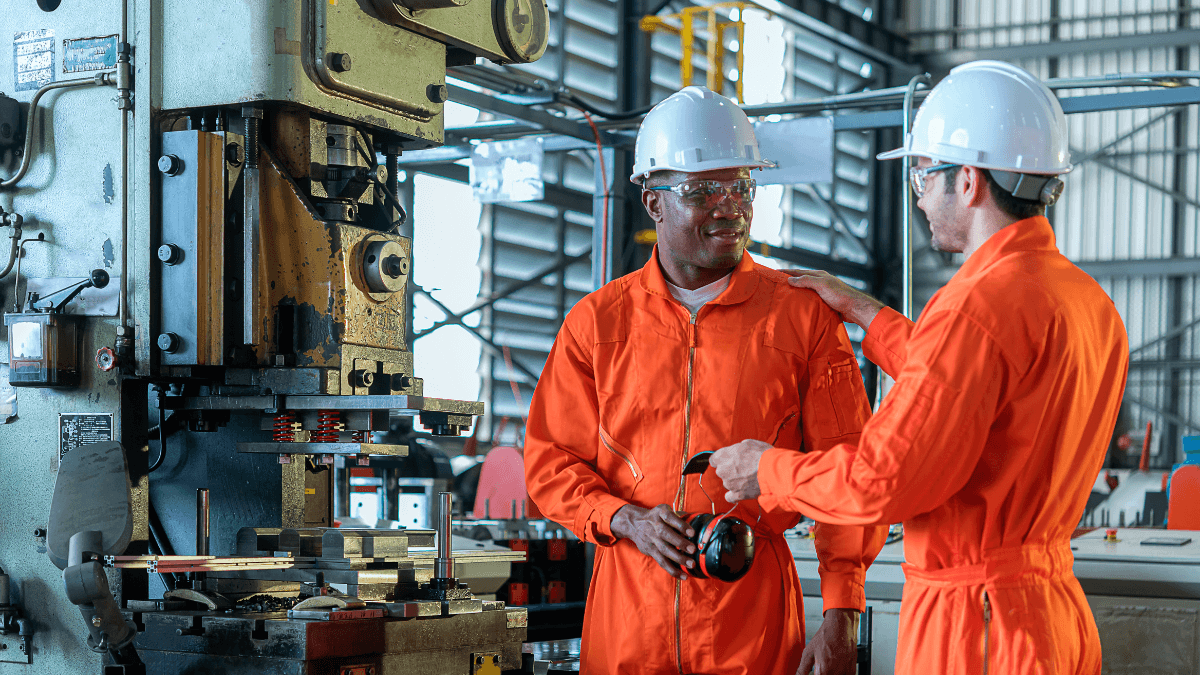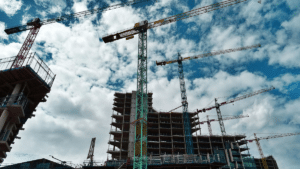Hard labor done in the construction industry can take its toll on the well-being of workers. As the job is demanding, it’s easy for them to become disheartened and pessimistic.
A stimulating atmosphere at work, where they feel seen and have room to grow, can help them feel more motivated and increase their productivity.
That’s why managers should make an effort to make the construction work environment pleasant, and we know just the way to do it.
Read our tips below to find out how.
In this article...
Actually Manage Your Employees
A manager should do just that—manage.
It seems pretty straightforward, but not many people actually do it. They take a passive approach instead and let the team manage itself.
However, this hands-off approach doesn’t benefit the employees or the company and creates confusion instead of an enjoyable atmosphere.
A much better tactic used by successful construction managers is to engage with employees and communicate with them openly and often.
When you take an interest in your employees, they will feel more comfortable and more connected to you.
Having a manager who’s easy to talk to and who listens to them will make employees feel more relaxed and less anxious even if they need to raise difficult subjects.
In addition, it’s essential to give employees regular updates and constant feedback. That way, they won’t feel left out, and the quality of their work will increase.
Instead, they will feel heard, accepted, and see that you care about them.
Empathy is an essential skill for managers to do all of the above. This is evidenced by DDI’s Leadership Skills Research which showed that empathy is a top factor in job performance.
It’s also related to higher performance in the four leadership domains, as demonstrated below.
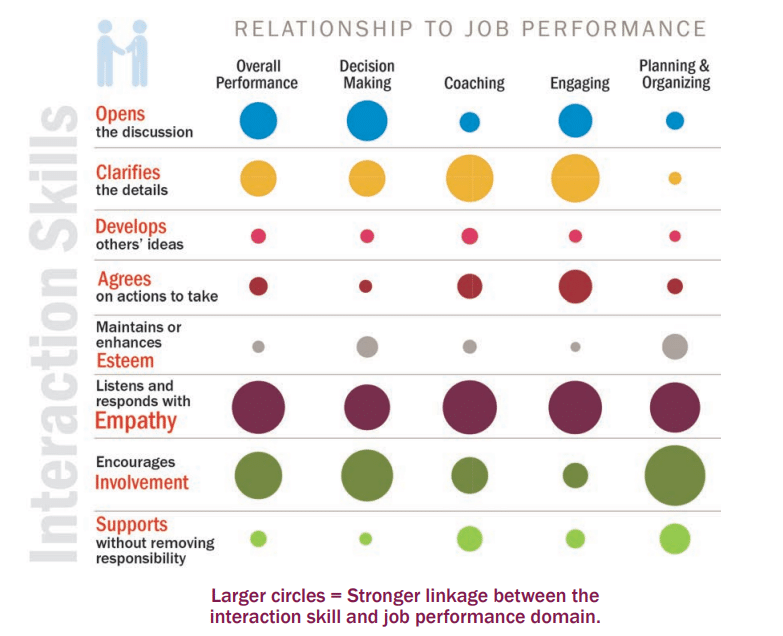
Managers who show empathy understand what their workers are feeling and don’t blame them but accept it and give them their full attention.
However, it’s not enough to be there when employees reach out; a good manager takes an active approach and checks in with them regularly.
It doesn’t mean that they should micromanage their employees. On the contrary, employees should be trusted to do their job.
Check-ins are just meant to offer support in case a problem arises. This shows employees that their manager cares about them and their well-being.
Even if a manager is not present at the site, there are plenty of ways to check in with employees.
For instance, there can be a weekly email exchange or a video call. Either way, it’s essential to be consistent and keep in touch.
Take Care of Your Team’s Health
Construction professionals are exposed to many more stressors than the rest of the working population.
The noise, debris, heat, repetitive actions, too much heat or too little light, and hard physical work–these factors add up and create a highly challenging environment for workers.
This environment can have a detrimental effect on their mental and physical health.
In fact, a study published in the Scandinavian Journal of Medicine & Science in Sports found that workers doing hard labor had a 55% higher risk of developing dementia than white-collar workers.
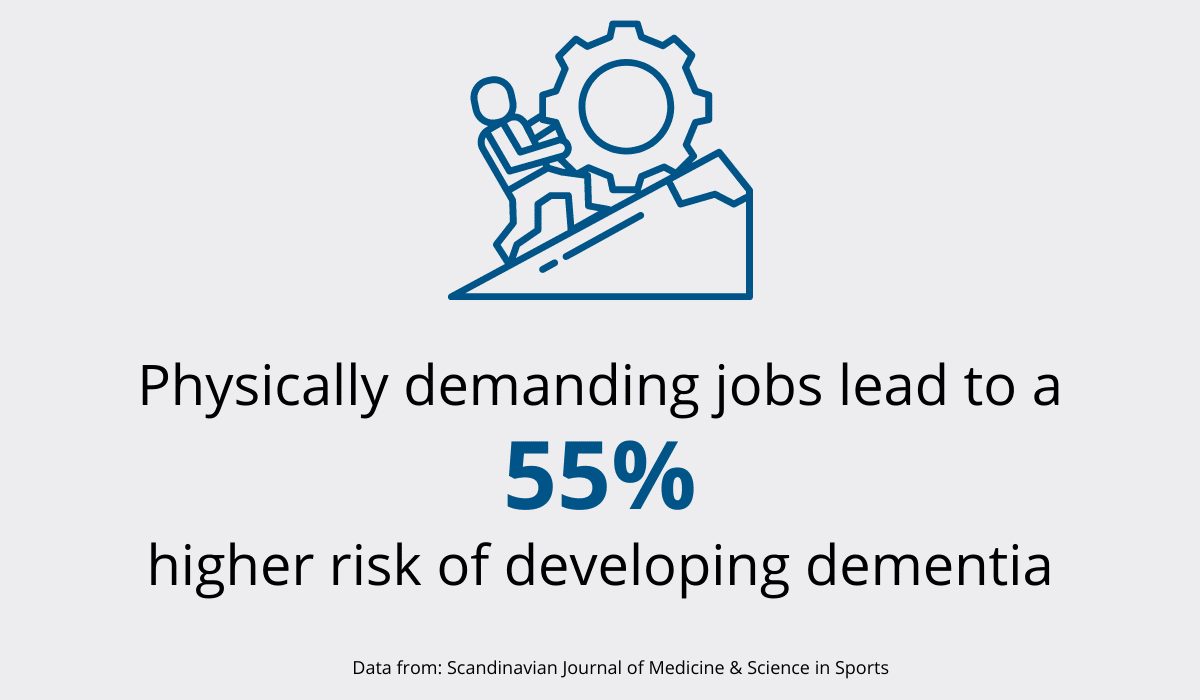
Therefore, all reasonable steps should be taken to make their lives easier and help them feel better and safer at work.
One way to do it is by providing sturdy, high-quality personal protective equipment (PPE).
This includes helmets to protect workers from falling objects, kneepads to make it easier for them to do work on the ground, good boots, specialized clothes to cool them down or keep them warm, ventilators, noise-canceling headphones, and much more.
PPE will minimize the effects of stressors and reduce the risk of injury while helping workers relax because they know they’re protected.
In addition to protecting them by providing additional equipment, care should be taken to ensure that the tools and machines they use are in working condition.
Tools and machines should undergo regular maintenance, and the easiest way to stay on top of the maintenance schedule is by using an inventory tracking system such as GoCodes Asset Tracking.
It’s a cloud-based solution that allows you to track and manage tools without purchasing any additional equipment.
You get customized QR code tags that can be scanned by downloading the GoCodes Asset Tracking app for iOS or Android on your phone or tablet.
You’ll be able to see where all your tools are located and access their service records to see when maintenance is scheduled.

Regular inspection and maintenance will ensure that workers only operate safe and functional equipment, minimizing the chances of accidents.
One final caveat is in order.
You should never knowingly assign unsafe tasks or tasks for which a person is not skilled. It’s irresponsible and hazardous, and it will make workers feel uncomfortable.
We’re not talking about tasks that are potentially unsafe but can be managed with adequate precautions and PPE.
An example of an unsafe task we’re referring to would be allowing someone to climb a tower in inclement weather or without a safety harness.
Or even worse, asking a person with no relevant experience to climb it.
The person might accept it because it comes from a manager, but it will create a sense of uneasiness and a feeling that a manager doesn’t care about their safety.
Celebrate the Achievements Together
When asked what a successful project looks like in an interview, Vincent Testa, a project manager for healthcare construction projects at Jacobs, said:
“To me it’s more than just client satisfaction—it’s the entire team satisfaction. It’s having a cohesive team that’s dedicated to the patient’s well-being and patient experience.”
Accomplishing something is cause for celebration, and gathering the team to do it together is excellent for morale and building team spirit.
When celebrating group achievements, it’s important to recognize individual efforts that made it possible.
If possible, you should do it publicly. Everyone likes receiving direct praise for their work, which will help them develop a sense of pride and give meaning to their work.
They will love coming to work knowing they’ll be doing meaningful work in a team that works well together and with a manager who appreciates them.
The great news is that construction seems to be an industry where hard work truly is appreciated.
According to the Employee Engagement Report 2020 by TinyPulse, construction ranked second in recognizing great work.
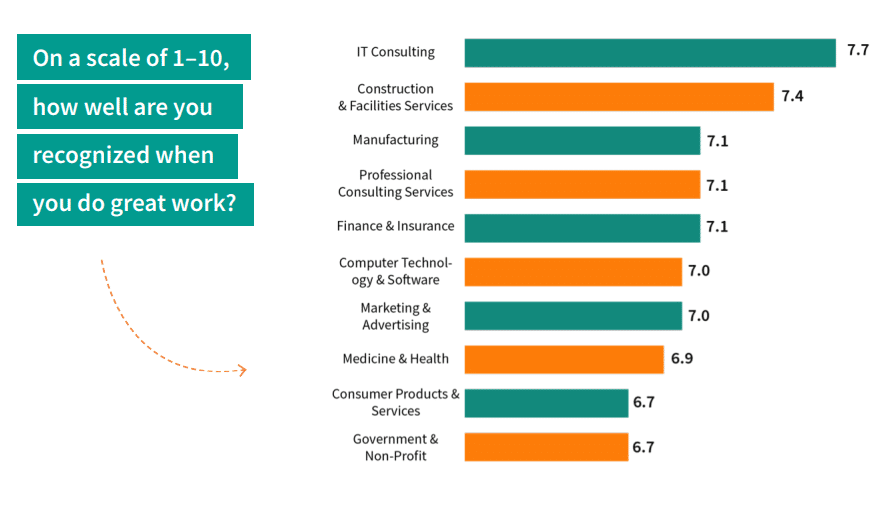
This is especially important if we consider that the OC Tanner Institute found that almost 80% of people who quit their jobs did so due to a lack of recognition.
When celebrating achievements, the start and finish of a project are a given, but milestones in between shouldn’t be ignored either.
Celebrating them will help the team look forward and focus on the positive instead of thinking about the challenges they face each day.
According to Liz Jazwiec, a keynote speaker specializing in workplace morale:
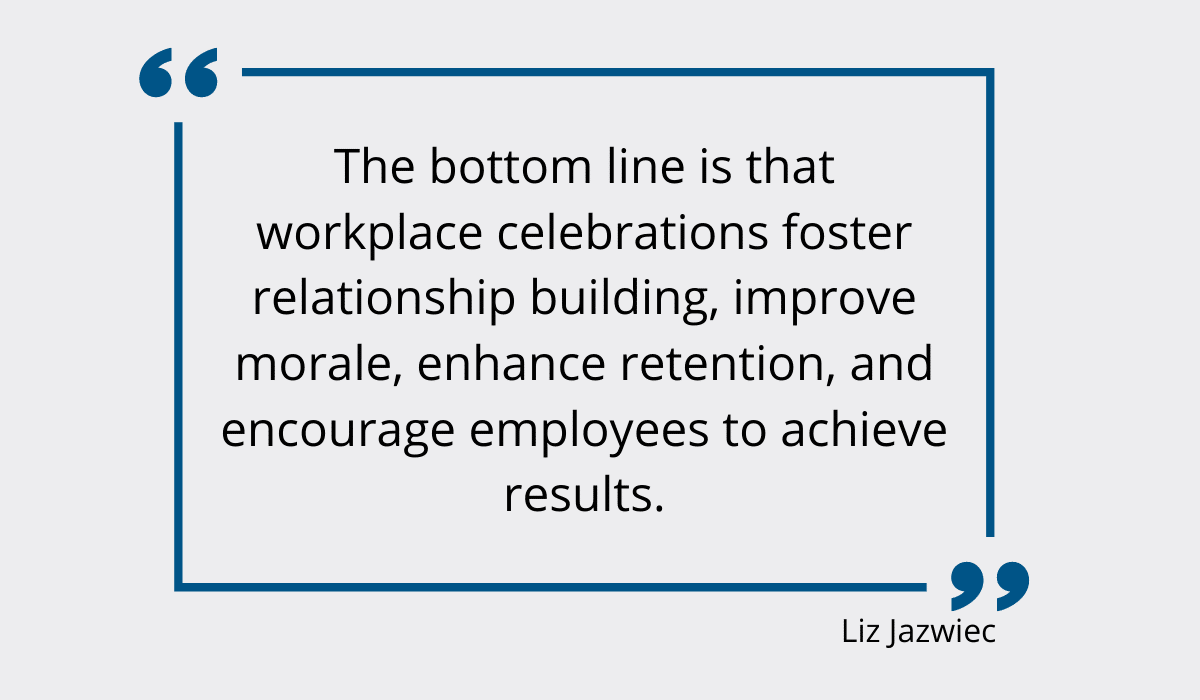
It doesn’t have to be a grand gesture—you can simply have monthly meetings to inform everyone of how far you’ve come thanks to their hard work.
You can make it fun by having everyone bet on when the next milestone will be reached or what it will be, and then rewarding the person who guessed right at the next meeting.
It will foster camaraderie and increase productivity by giving workers something to look forward to.
Seeing how everyone’s work contributed to accomplishing a joint goal will help team members feel closer to each other and create a cohesive unit.
They will communicate better, and knowing they can rely on each other will strengthen their relationships.
Incentivize Good Work
In addition to celebrating hard work after it’s done, it’s also important to offer incentives for good work practices to increase the chances of them happening.
The objective of incentives is simple: to improve an area that needs improving by offering employees something that truly motivates them.
This is a highly effective method, as a study by Genesis Associates found that 85% of workers feel more eager to do their best when properly incentivized.
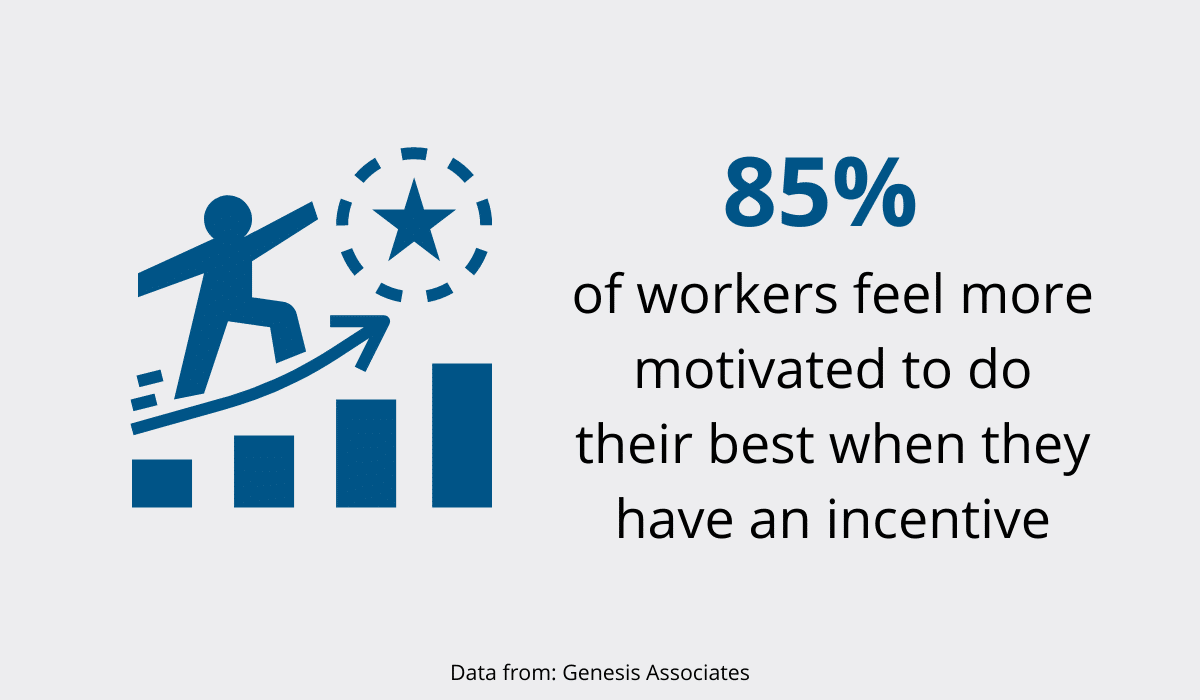
One area that can always be improved is safety.
According to IndustryWeek, there are several steps you can take to meaningfully engage your employees in an incentive program to enhance it.
First of all, you should include everyone at all levels of the organization. That way, everyone will see it as a regular part of their job instead of a chore.
Then, you should set long-term and short-term goals that everyone should aim for.
An example of a short-term goal could be organizing monthly safety meetings, and a long-term goal would be reducing workplace injuries by 5% in the next quarter.
Depending on what motivates your workers, the incentives could be personalized plaques, bonuses, days off, or even professional development opportunities.
In general, it’s better to go small and reward multiple people than give one big incentive to a single person.
If several people receive incentives, it’ll increase the chances of everyone trying harder because they see a significant chance of their efforts being rewarded.
On the other hand, if only one person is rewarded, others might think there’s no point in trying if their chances are so low or even feel envious.
Offer Advancement Opportunities
Career progression is one of the main factors contributing to workers feeling good about their job. They know that their work will pay off and clearly understand what they’re working towards.
As someone who has worked for the commercial real estate giant CBRE for 25 years, Director of Property Management Eileen credits the ability to advance for staying at the company for so long.
“As a director, I like to keep people moving up within the organization. It gives that person so much confidence when they grow within the company; they don’t have to go looking elsewhere to get a promotion. They get more money, more responsibility, and get to feel a sense of accomplishment. In turn, their colleagues feel good knowing that they have an opportunity to move up as well. That’s always a great feeling.”
Managers need to develop a plan for promotions to allow their workers to move up in their careers.
Having a strategy in place will give them a clear picture of areas for improvement and room for growth.
The company can then invest in the education or training of workers with the correct skill set who show potential or initiative for a specific role.
The decision should not be based on how long someone has been at the company but on how qualified they are to fit a particular role.
The objective of promotions is for a worker to get higher pay and additional responsibilities, preferably more challenging ones.
An excellent place to start when considering who to promote and to which role is with your company’s organizational chart.
Here’s what it looks like for Rafael Construction, Inc., a Las Vegas-based civil construction company.
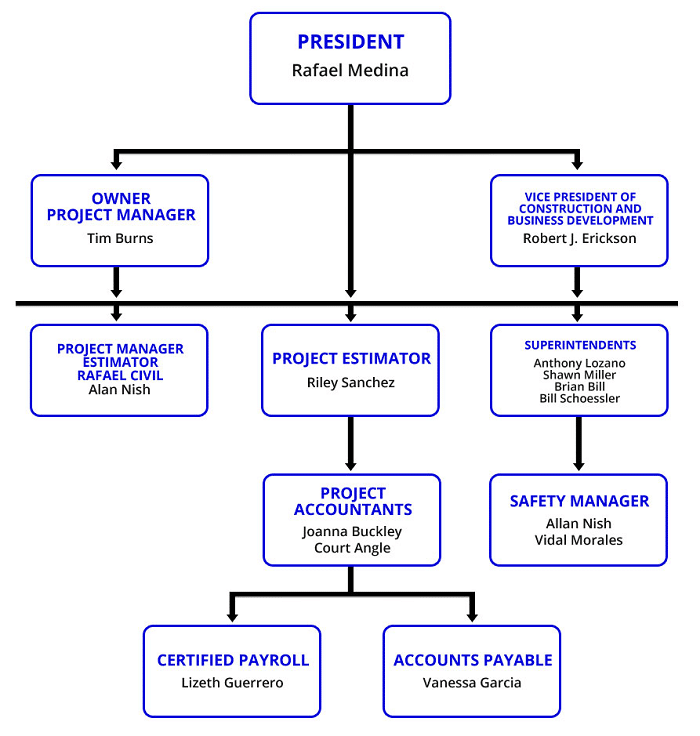
Rafael Construction is a smaller company, so a promotion could mean that a safety manager gets promoted to superintendent or a project accountant gets promoted to project estimator.
As demonstrated below, bigger construction companies offer more advancement opportunities because there are more roles.
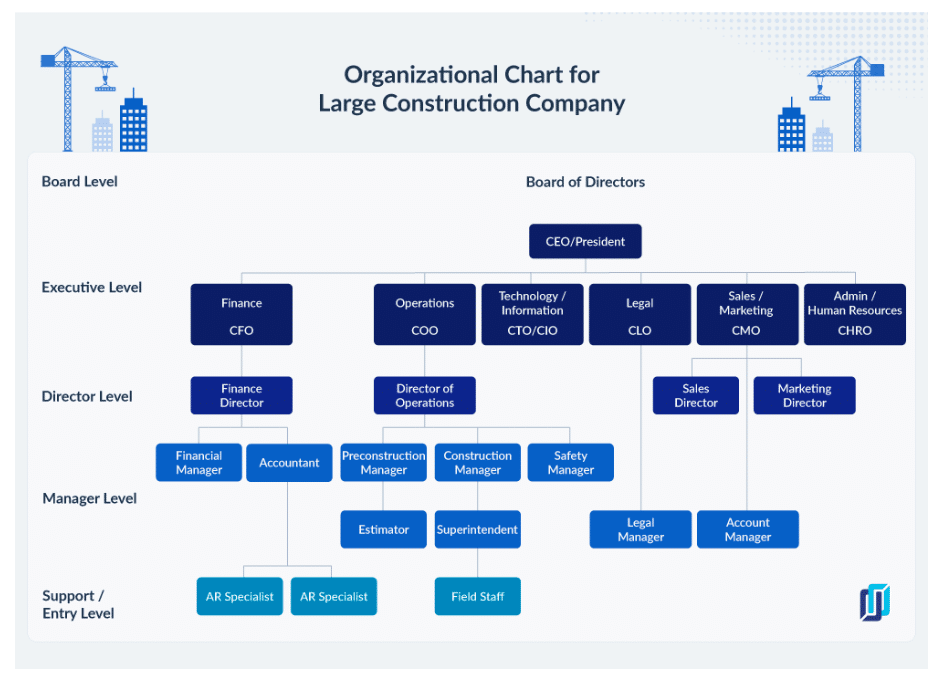
So, in larger companies, workers can move up from entry-level positions such as field staff (e.g., a carpenter) and get promoted to superintendent.
After undergoing training or attending education programs, they can move to a management position or even become the director of operations.
Conclusion
A positive work environment in construction is vital for your workers’ job satisfaction.
If your workers are part of a team led by a great manager where their work is rewarded, successes celebrated, and where they have chances to grow professionally, they won’t go looking for career opportunities elsewhere.
By taking time to ensure that the work environment in your construction company is relaxed and the atmosphere positive, you’ll be able to retain top talent and keep your employees happy for years to come.

